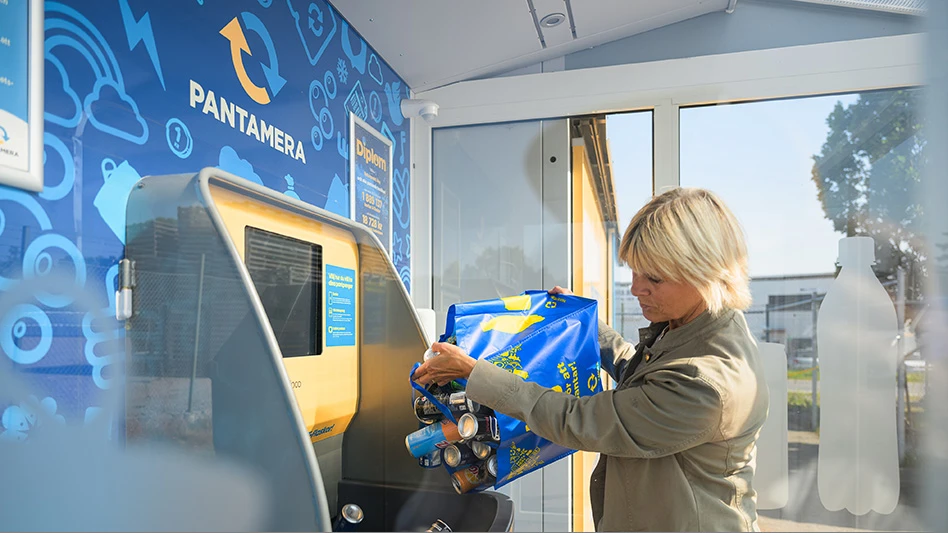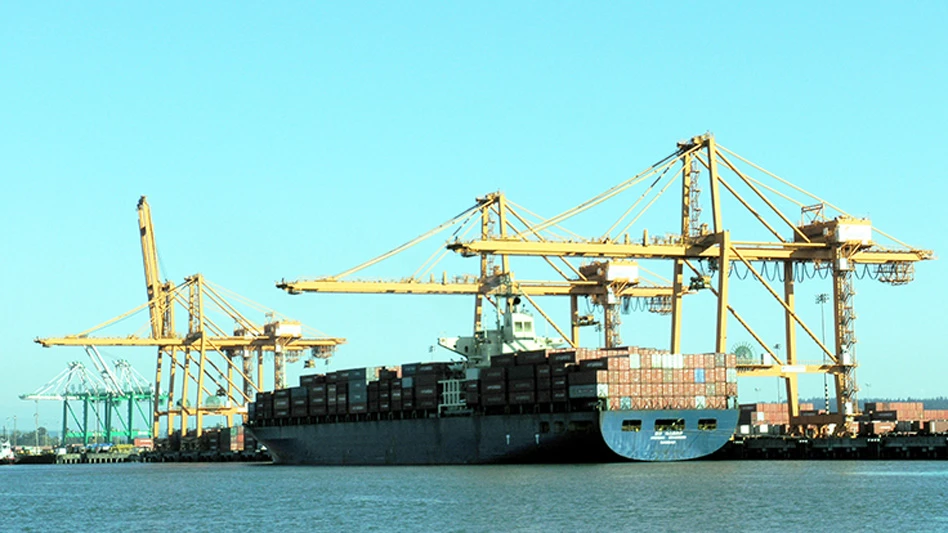The element of risk is seldom greater for a business than when it either acquires another company or agrees to be acquired by an outside firm.
This ultimate form of risk-taking is almost always on the minds of company owners and decision-makers, but recent history seems to indicate that merger and acquisition activity has "peak seasons." The basic materials and recycling industries appear to be in such a season right now.
A robust global economy has created a hunger for basic materials, and large investors have noticed. For the owners and managers of recycling companies that are part of this manufacturing chain, the opportunities and the risks abound.
BUYING AND SELLING. In any given calendar year, scrap recycling businesses are bought and sold. A common motivator on the sell side can be aging owners without any heirs or successors in line to take over the existing business. On the buy side, aggressively managed scrap companies that wish to gain market share and to acquire assets are almost always in the market for a good opportunity.
|
WHERE ARE THEY NOW? |
|
Scrap metal industry acquisition activity from approximately 10 years ago was largely spearheaded by three publicly traded U.S. companies: Recycling Industries Inc., Philip Services Corp. and Metal Management Inc. At that time, these three companies often used stock as the currency to acquire and grow their businesses. Either corporate strategic shortcomings or the widespread weakness in the stock market at the turn of this decade created financial difficulties for all three companies. All three of the companies ended up filing for bankruptcy protection, with Recycling Industries Inc. failing to re-emerge. Of the key figures helming these three companies, none is presently involved in the scrap industry. Recycling Industries Inc. (RII) was led by Tom Wiens. On his watch, the company acquired a host of firms, including Mindis Metals, Central Metals and William Lans. However, after snapping up dozens of operations throughout the United States, the heavy debt load and a downturn in the economy forced the company to file for bankruptcy protection and eventually liquidate its operations. Wiens went on to test his political acumen in Colorado, and is now a Republican State Senator in that state. For Metal Management, the company also followed a similar arc to grow its business. Ben Jennings and Gerry Jacobs, two of the developers of the Metal Management concept in 1995, ended up building the company through more than 30 acquisitions. However, Jacobs notes, while trying to weather a "perfect storm" when more than 20 U.S. steel companies filed for bankruptcy protection, Metal Management itself filed for bankruptcy protection. Unlike RII, the company was able to emerge from Chapter 11, and has recently been a solid performer on the stock market. After leaving Metal Management in 1999, Jennings and Jacobs have since moved from working for private equity operations such as CGI Holdings, to running an Internet marketing firm called Think Partnership, which they left last year. Jacobs says that he is now working on a new company involved in the waste management industry, while Jennings is involved in putting together an electronics recycling firm. Former CEO Albert Cozzi remains in the scrap industry, as one of the leaders of Cozzi Consulting Group, Burr Ridge, Ill., described on its Web site as "a full-service sales and management consulting firm that specializes in the marketing of scrap metal, paper and plastic." The former Philip Services Corp., based during much of its tenure in Canada, grew primarily through acquisition. Between 1995 and 1997, the company made about 30 acquisitions totaling around $1.2 billion. After a series of write downs and special charges drove the company into bankruptcy, it was later sold to a U.S.-based investment group. The officers of the company at that time, including CEO Allen Fracassi and COO Philip Fracassi were later fined $100,000 and banned from serving as directors of a public company for as long as 12 years. – Dan Sandoval |
A scrap company buying and selling spree of the period from roughly 1996 to 1998 matched a run-up in the stock market at that time as well as a healthy global scrap market.
Similarly, the past two years have marked impressive rallies in stock prices as well as some of the healthiest metals markets in history. Investors in the past two years, just as they were in the late 1990s, are proving eager to explore the wisdom of either the buy or sell side of a transaction.
This confluence of factors has resulted in more Recycling Today news items covering transactions like the following, all of which were reported on during the first three months of this year:
• Schnitzer Steel Industries, Portland, completes its acquisition of New Hampshire’s Advanced Recycling (January 2007);
• Alter Trading, St. Louis, purchases Wisconsin’s Samuels Recycling Co. (January 2007);
• Ferrous Processing & Trading, Detroit, purchases Cleveland’s M. Weingold & Co. (January 2007);
• OmniSource Corp., Fort Wayne, Ind., acquires several Indiana facilities from Mervis Recycling (January 2007);
• PSC Metals, Cleveland, purchases Ohio’s Ravenna Salvage/Akron Recycling (January 2007);
• Metal Management Inc., Chicago, agrees to buy TIMCO Scrap Processing, Channelview, Texas (February 2007); and
• Sims Group bulks up its electronics recycling assets with the purchase of Untied Recycling Industries, West Chicago, Ill., and three former Noranda Recycling (now Xstrata) electronics recycling locations (February and March 2007).
During the heightened acquisition activity of the 1990s, some of the entities doing the buying conveyed a "jump on board or get left behind" message to the market. A vision of consolidation that might evolve into five or six major scrap companies controlling a vast portion of the market was specifically spelled out by former Metal Management President Albert Cozzi for a profile of Metal Management that was published in the June 1998 edition of Recycling Today. "I think that a very large portion of the business will be controlled by five or six consolidators," Cozzi said.
Acquisition announcements at that time pointed to strategies that had accumulation of properties in mind as the goal. News releases from the former Recycling Industries Inc., in particular, would conclude with a scoreboard-like reference to the company’s new "revenue run rate" with the addition of the new facilities acquired.
If scrap companies engaged in acquisitions now are seeing such visions of consolidation, they are not necessarily proclaiming it. Many of the recent deals, instead, point to a more deliberate spread of operations within more familiar geographic territories.
STAYING CLOSE. Scrap flows internationally, which can provide a partial reason why a Midwestern company such as Alter Trading has an office in Shanghai.
Managing scrap purchasing and processing operations, however, is often considered a much more local endeavor, leading to the time-honored phrase, "all scrap is local."
Australia’s Sims Group and the U.K.’s European Metals Recycling (with its purchase of Southern Scrap in the U.S.) are two firms with operations on more than one continent. Pittsburgh-based AMG Resources also has facilities in the United Kingdom.
Many other scrap companies, however, have decided that expanding operations is best approached with proximity as a foremost consideration.
Although OmniSource Corp., Fort Wayne, Ind., is one of the largest processors of scrap metal in the United States, most of its processing operations can be found in the three states of Indiana, Ohio and Michigan. (The company also has affiliated operations in the Southeast managed by Carolinas Recycling Group, Lyman, S.C.)
"Our acquisitions consistently have been strategic in their purpose," says OmniSource Executive Vice President Ben Eisbart. "If you view the way we have acquired companies throughout OmniSource’s history, we take a very measured, definitive approach," he adds. "Just to buy to accumulate makes no sense."
|
FACING DOWN THE GIANTS |
|
At times, those promoting rationales for greater consolidation within the scrap recycling industry posit that if the steel industry consolidates significantly, the ferrous scrap industry will need to do the same to negotiate the sale of scrap. This decade, that theory is being put to the test to some extent, as the steel industry has witnessed significant consolidation domestically and globally and in integrated and electric arc furnace (EAF) steelmaking. The largest integrated steelmaking company is Arcelor Mittal (the company also owns some EAF capacity), while among EAF steelmakers, Nucor Corp. and Gerdau have expanded their capacity this decade. In both segments, however, competition remains a reality, especially in the EAF segment, where companies such as Steel Dynamics Inc., Commecial Metals Co. (CMC) and Chaparral Steel remain important scrap buyers in their operating regions. Is the existence of fewer domestic buyers causing concern for shippers of ferrous scrap? "I think it’s a secondary consideration," says Daniel Dienst, CEO of Metal Management Inc., Chicago. He does offer, though, that "logic would dictate that larger consumers would want to deal with larger scrap sellers." Alan Postel says the recycling division of CMC is not encouraged by its board of directors to necessarily react to what is happening in the steel industry, where CMC is also active. "We would not accelerate acquisitions due to consolidation in the steel industry," he states. The consolidation of the steel business is even seen as a positive by some scrap recyclers. "Healthy mills are good news for the scrap industry," says Rob Bakotich of Ferrous Processing & Trading, Detroit. "The strength in the steel industry for the past three to five years has helped the [scrap] market stay strong." Allan Goldstein of AMG Resources, Pittsburgh, says flatly that he does not buy into the logic that scrap companies have to get larger as a reaction to consolidation within the steel industry. "It doesn’t follow that because Mittal buys a mill, I have to buy a scrap yard," he remarks. – Brian Taylor |
Just as OmniSource has found ways to enter the Southeast market via its affiliate arrangement with Carolinas Recycling Group, Postel says that CMC does not exclude the possibility of entering new geographic markets. "We are interested in going into markets outside this area where there is a strategic and business reason for doing so," he comments.
Rob Bakotich, vice president of sales and marketing at Detroit-based Ferrous Processing & Trading, says the company focuses on operating in regions where it can establish a major presence. "We consider ourselves a regional player and we look for strategic acquisitions," he comments.
The geography of a deal is always a consideration, but should not be the only one, according to Allan Goldstein of AMG Resources, Pittsburgh. He lists "the right price, product line extensions [and] geography" as reasons for a scrap company to purchase an existing firm or location.
Goldstein is among those who say this decade’s mergers and acquisitions pass the logic test at a higher rate compared to much of the deal-making that was going on in the mid- and late 1990s. "You’re seeing more logical actions," he comments. "People in the scrap industry are making acquisitions at a pace and timing that is compelling and for more compelling reasons."
Many in the industry learned hard lessons in the last decade, says Goldstein, including that rolling up volume in and of itself is of little help if careful management and customer service get lost along the way. "The [1990s] wave was based upon two propositions: by having more scrap they could leverage it for a higher selling price and that they could somehow leverage their volume by buying scrap for less. But the market doesn’t work that way," Goldstein declares.
LESSONS LEARNED. When Recycling Today tried to summarize merger and acquisition activity for its readers in a March 1998 story, the recent purchases of several companies were listed, including CMC, OmniSource and Alter Trading.
But the three companies with the most activity by far were Metal Management Inc., Philip Services Corp. and Recycling Industries Inc.
Each of these companies would eventually enter bankruptcy reorganization, with one, Recycling Industries Inc., not re-emerging successfully.
PSC Metals, Mayfield Heights, Ohio, is the surviving scrap metal entity from the former Philip Services Corp., which also had steel mill services, solid waste and hazardous waste divisions.
Although sources within the scrap industry have indicated that in 2006 the company discussed offers to sell all or parts of its scrap portfolio, the company has more recently made acquisitions and capital investments in its geographically diverse operations, which are in Alabama, Georgia, Indiana, Kentucky, Missouri, Ohio, Tennessee and Canada.
Metal Management Inc., Chicago, has emerged from its bankruptcy with CEO Daniel Dienst, who has now been an executive with the company since 2000 and who has helped produce a series of profitable quarterly and annual results.
The company’s most recent results, for its fiscal year third quarter that ended Dec. 31, 2006, show $15.6 million in net income produced from the sale of some 1.4 million tons of scrap metal—1.2 million ferrous and 200,000 tons of nonferrous.
Although pricing declined during that period, Dienst credited good management and operations for the company’s continued profitability. In particular, Dienst credits the company’s ability to turn its inventory over quickly and its investment in induction sorting systems as a means of recovering nonferrous metals for helping the company turn a profit while prices fell.
Inventory turnover in particular is a practice that Dienst has championed as CEO. "We as a company used to turn our inventories four times a year; now we are turning inventory over 12 times on the ferrous side and 16 to 18 times on the nonferrous side," according to Dienst.
Along with closely managing operations, Dienst lists "discipline, integrity, environmental practices [and] housekeeping" as criteria that must be ingrained into the company’s culture at every location. If that can be done, some of the hurdles of managing across a wide geographic are become less formidable, he contends.
Even so, Dienst says his company is also convinced that geography remains a key consideration when an acquisition is considered. He says that in addition to company culture and a location’s transportation grid access, Metal Management does look first at "markets that we are already in or adjacent markets."
Dienst is optimistic that Metal Management board members and shareholders understand the cyclical nature of scrap values, but at the same time he realizes it has been among his chief mandates to manage the business to be buffered from the effects of commodity price swings on the bottom line.
Such management lessons can carry over into the acquisition practices carried out by larger scrap companies when they consider whether a deal is worth making.
PRICE POINTS. Whether an acquisition is near or far, it can cause more near-term harm than good if the acquiring company has overpaid.
In many minds, that is the most prominent lesson of the 1990s acquisition spree. "We have recently acquired scrap yards, and every acquisition has lessons to be learned. A major lesson we have learned is to pay a reasonable price," says CMC’s Postel.
Looking back on some deals made by the fast-paced consolidators of the 1990s, AMG’s Goldstein says they were often guilty of paying whatever price it took to complete a transaction. By contrast, "The pricing is more realistic" for most of the recent transactions with which he is familiar, says Goldstein.
Among two good signs that Goldstein points to regarding recent acquisition activity is that the prices paid for scrap firms are "not as stratospheric" as in the 1990s heyday. Contrarily, "We’re seeing deals that don’t get done," he remarks, because either the potential buyers or the sellers take the time to conclude that the transaction is not in their best interests.
As the leader of one of the surviving entities from the 1990s consolidation craze, Dienst is also quick to comment that recent dealmaking has little in common with that era. "There has not been the rock-and-roll pace in terms of acquisitions the way there was in the mid-to-late 1990s," he comments. "I am somewhat pleased that the deals done to date [recently] seem to be rational and make sense. There is no need to rush."
Regarding Metal Management, he says the company is "always thinking about" growing through acquisition, noting that it even maintains a "wish list" of 10 to 15 companies that it sees as a good fit. "We’re focused only on acquisitions that will make us better; we’re trying to be careful," says Dienst.
Another consideration involves growing vertically—either by operating a melting facility or by reaching into the supply chain to collect scrap before it hits the dealer market.
VERTICAL LEAPS. Virtually every major player in the scrap market operates one or more auto shredders. Many regional markets have several shredding plants competing with each other for feedstock, a situation that has spurred some new developments in the scrap industry.
In 2002, Schnitzer Steel Industries acquired full ownership of Pick-n-Pull, an auto salvage company with multiple locations in the Western United States. Pick-n-Pull continues to operate in many ways separately as an auto salvage operation distinct from Schnitzer’s steelmaking and scrap operations, but with an important twist.
The auto hulks generated at Pick-n-Pull locations are largely directed to the auto shredders operated by its sister scrap company, thus guaranteeing some flow to the massive shredders operated by Schnitzer on the Pacific Coast.
The arrangement seems to have worked well for the company, although its most recent quarter saw Pick-n-Pull with a decline in operating income blamed on higher costs for purchased totaled vehicles.
When its vertically integrated business model is clicking, Schnitzer may well bale auto hulks at one of its Pick-n-Pull locations, shred them at a Schnitzer auto shredder and melt the ferrous shred at the Schnitzer Steel mill in Portland.
Larger scrap recycling companies are considering their options when it comes to that sort of integration, particularly in the downstream acquisition of auto shredder feedstock.
Scrap recyclers can face a quandary when entering the downstream salvage market, however, as they can then be seen as direct competitors to other auto salvage firms, many of whom supply feedstock as customers.
But a risk can come from inactivity as well. A different competitive threat some scrap recyclers could face is upward integration from those in the salvage business, as some companies in that segment get more involved in the scrap markets.
Even riskier—and almost certainly more costly—is to integrate vertically into the scrap melting and metals production business sector. While the model has provided long-term success to companies such as Schnitzer Steel Industries and Commercial Metals Co., the production of metals in the United States is regarded by most observers as a mature industry where investment opportunities in new capacity must be considered cautiously.
YELLOW LIGHT. Caution is probably the key word surrounding most merger and acquisition activity in the current market.
Scrap executives seem unanimous in commenting that the only good deals being made are those that carry a reasonable multiple (purchase price to annual earnings ratio), are thoroughly researched and that can involve operations that can be managed within a sensible geographic construct.
And do owners of smaller scrap companies risk a "sell now or get left behind" future? Most of the recycling company executives contacted do not see that being the case.
"Smaller companies can do as well as larger companies," says FPT’s Bakotich, although he also acknowledges that handling larger tonnage also offers advantages to those who do.
Says CMC’s Postel, "This is an entrepreneurial business and there will always be room for smart, aggressive operators of all sizes."
"We’ll always see smaller dealers," remarks AMG’s Goldstein. "The more people try to consolidate the more they are going to find out that new players are going to come into the market."
Metal Management’s Dienst, while not afraid to look for growth opportunities, sees no good reason why smaller dealers will not continue to thrive. "I don’t think [smaller companies] should feel threatened," he remarks.
"Many of those companies are our customers," he continues, pointing out the benefits of a multi-layered industry. "To have healthy, well-capitalized outlets through which to clear their scrap is a benefit to them, I think. It really provides better operating dynamics for mid-sized and smaller players to manage their own businesses," he adds.
The mentality of aggregating assets just for the sake of producing a larger revenue figure is summed up by OmniSource’s Eisbart: "Just to buy to accumulate makes no sense."
In a buoyant market, it may be difficult to tell whether the current merger and acquisition moves have been suitably researched, leading to the ability of large companies to weather the next downturn.
Judging by the tone of remarks and the more cautious pace of activity, however, those doing the acquiring may well have considered many of the variables before plotting their moves.
The author is editor-in-chief of Recycling Today and can be contacted at btaylor@gie.net.
|
THE GROWTH OF REGIONAL HEAVYWEIGHTS |
|
Acquisition activity in the scrap industry in the past three years has, to some extent, shown a pattern of geographic proximity between the acquiring company and the acquired sites, although not in every case. The map at right shows the headquarters of several scrap companies with notable merger and acquisition activity that has taken place between 2004 and 2007. 1. OmniSource Corp., Fort Wayne, Ind. • Mervis Industries facilities, January 2007, Indianapolis, • K&F Industries, March 2006, Indianapolis • Mercer Co., February 2005, Sharon, Pa. • Columbia Iron & Metal, February 2005, offices in • Surath & Sons, September 2004, Bay City, Mich. • Admetco, June 2004, Fort Wayne, Ind. • H. Hirschfield & Sons, March 2004, Bay City, Mich. 2. Metal Management Inc., Chicago • TIMCO Scrap Processing, January 2007, Channel- • Morris Recycling, March 2006, New Albany, Miss., other locations • Former Gertler/OmniSource facility, May 2006, Sponsored Content Labor that WorksWith 25 years of experience, Leadpoint delivers cost-effective workforce solutions tailored to your needs. We handle the recruiting, hiring, training, and onboarding to deliver stable, productive, and safety-focused teams. Our commitment to safety and quality ensures peace of mind with a reliable workforce that helps you achieve your goals. East Chicago, Ind. • Houchens Industries joint venture, January 2005, Nashville, Tenn., and Bowling Green, Ky. 3. Sims Hugo Neu, New York/Richmond, Calif. (U.S. headquarters) • Merger with Hugo Neu, June 2005, New Jersey and California operations • United Recycling, March 2007, West Chicago, Ill. • Xstrata/Noranda, March 2007, Roseville, Calif., Bramp- • Lease agreement with Chaparral Steel to operate shredder, June 2004, Petersburg, Va. • Bay Bridge Enterprises, April 2004, Chesapeake, Va. 4. Ferrous Processing & Trading Co., Detroit) • M. Weingold & Co., January 2007, Cleveland • Parts Galore, auto salvage operation started 5. Commercial Metals Co., Irving, Texas • Yonack Iron & Metal, June 2006, Irving, Texas 6. David J. Joseph Co., Cincinnati • Palm Beach Recycling, March 2006; West Palm Beach, Fla. • Northwest Recycling, February 2006, Houston 7. Schnitzer Steel Industries, Portland, Ore. • Regional Recycling, September 2005, Atlanta, other locations • Advanced Recycling, January 2007, Concord, N.H. • Pick-n-Pull Acquires Greenleaf, October 2005, Dearborn, Mich. 8. PSC Metals, Mayfield Heights, Ohio • Ravenna Salvage/Akron Recycling, January 2007, Akron, Ohio • Causey Enterprises, July 2005, Bowling Green, Ky. • Knoxville Recycling Co., August 2005, • Gadsden Iron & Metal Co., July 2004, Gadsden, Ala. 9. AMG Resources Inc., Pittsburgh • 50 percent stake in Royal Green, June 2006, Temple, Pa. 10. Alter Trading, St. Louis • Samuels Recycling Co., January 2007, Madison, Wis., other locations • Gopher State Scrap, September 2006, Mankato, • Becker Iron & Metal, August 2006, Marshall, Minn. • Max Phillips & Son, February 2006, Eau Claire and Marshield, Wis. 11. Cohen Brothers, Middletown, Ohio • Staker Alloys, March 2005, Springfield, Ohio 12. CRG-Atlantic Scrap, Lyman, S.C • CRG-Atlantic, September 2006, Lyman, S.C. • Columbia Steel & Metal, March 2006, 13. Galamba Metals Group, Kansas City, Mo. • Outer Road Recycling, February 2005, • Hendren Salvage Co., May 2005, Columbia, Mo. • Applegarth Recycling, February 2004, Noel, Mo., and Sulphur Spings, Ark. |
Get curated news on YOUR industry.
Enter your email to receive our newsletters.

Explore the April 2007 Issue
Check out more from this issue and find your next story to read.
Latest from Recycling Today
- Nucor expects slimmer profits in early 2025
- CP Group announces new senior vice president
- APR publishes Design Guide in French
- AmSty recorded first sales of PolyRenew Styrene in 2024
- PRE says EU’s plastic recycling industry at a breaking point
- Call2Recycle Canada, Staples Professional expand partnership
- Circular Services breaks ground on north Texas MRF
- Tariff uncertainty results in choppy nonferrous scrap flows







